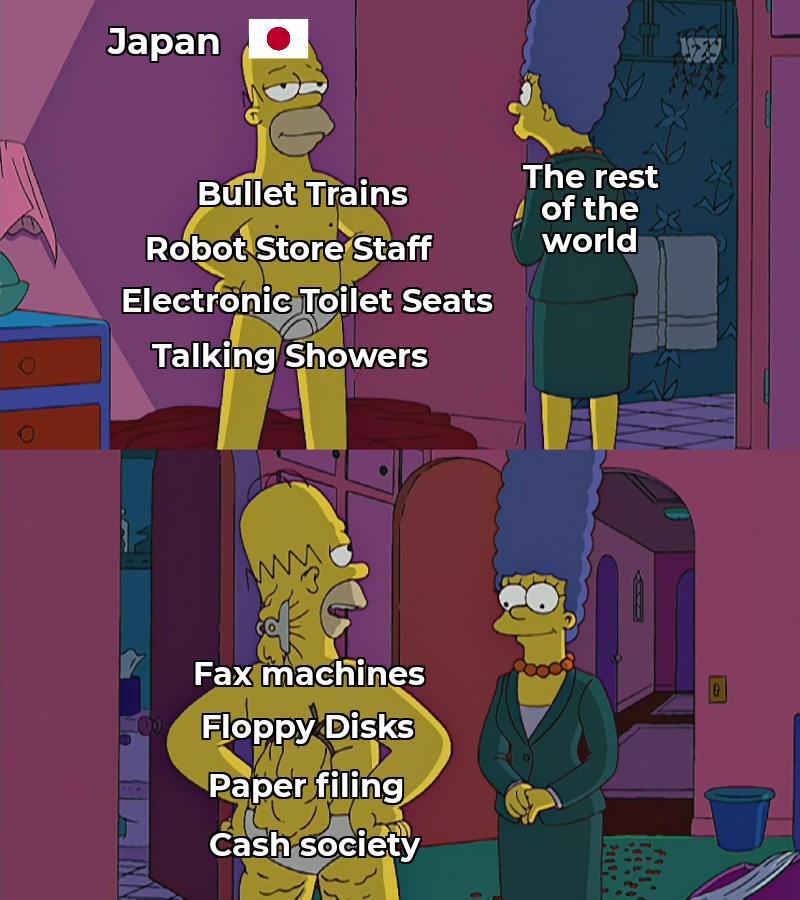this post was submitted on 28 Nov 2023
1148 points (95.5% liked)
memes
17461 readers
1274 users here now
Community rules
1. Be civil
No trolling, bigotry or other insulting / annoying behaviour
2. No politics
This is non-politics community. For political memes please go to !politicalmemes@lemmy.world
3. No recent reposts
Check for reposts when posting a meme, you can only repost after 1 month
4. No bots
No bots without the express approval of the mods or the admins
5. No Spam/Ads/AI Slop
No advertisements or spam. This is an instance rule and the only way to live. We also consider AI slop to be spam in this community and is subject to removal.
A collection of some classic Lemmy memes for your enjoyment
Sister communities
- !tenforward@lemmy.world : Star Trek memes, chat and shitposts
- !lemmyshitpost@lemmy.world : Lemmy Shitposts, anything and everything goes.
- !linuxmemes@lemmy.world : Linux themed memes
- !comicstrips@lemmy.world : for those who love comic stories.
founded 2 years ago
MODERATORS
you are viewing a single comment's thread
view the rest of the comments
view the rest of the comments

AFAIK DKIM/DMARC now is mandatory on most servers.
GPG. Or other E2EE.
DKIM and DMARC don't have anything to do with this. DKIM is a way for e-mail servers to sign e-mails with a key that's placed in DNS in an attempt to prevent e-mail spoofing, but this in no way protects e-mails you send from potentially being read in plain text. DKIM is also not necessarily mandatory, and you can potentially get away with just SPF. Many mail servers also do not have strict sender policies, which could potentially allow for spoofing in certain situations. Also neither DKIM / SPF provide any protections if an attacker is able to poison DNS records.
I mean, yes, but that's not really the point. PGP has essentially nothing to do with the e-mail protocols aside from the S/MIME extensions. Almost no institution is using PGP to secure e-mails. You could also encrypt something using PGP before you sent it over the fax lines in theory.
Neither TLS provide in such case. Attacker can request ACME cert.
Depends whose DNS you can mess with, but yes! It may be possible to poison DNS records for one e-mail server, but ACME certificate providers like letsencrypt (supposedly) try to do DNS lookups from multiple locations (so hopefully a simple man-in-the-middle attack will not be sufficient), and they do lookups directly from the authoritative DNS servers. This is, of course, not perfect and theoretically suffers from all of the same mitm problems, but it's more thorough than most mail servers will be and would potentially limit who would be in the position to perform these attacks and get a bogus certificate issued.
With DNSSEC and DANE you are even able to specify which TLS certificate should be used for a service in a TLSA record, and you can protect your A records and your CAA record which should make it much harder to get bogus certificates issued. Of course you need to trust the TLDs in order to trust DNSSEC, but you already do implicitly (as you point out, if you control the TLD you can get whatever certificate you want issued through ACME). The reality right now is that all trust on the web ultimately stems from the TLDs and DNS, but the current situation with CAs introduces several potential attack vectors. The internet is certainly a lot more secure than it used to be even 10 years ago, but I think there's still a lot of work to be done. DNSSEC, or something like it, would go a long way to solving some of the remaining issues.